Location Extinguisher

How do I properly store a fire extinguisher ?
Proper storage of a fire extinguisher is crucial for its effectiveness and safety. Here's a summary of the key steps: 1. Choose the right location by ensuring visibility, proximity to an exit, and avoiding obstructions. 2. Mount the fire extinguisher using specific brackets at a comfortable height while maintaining a horizontal position. 3. Maintain accessibility by ensuring a clear path and considering signage to indicate its location. 4. Conduct regular maintenance through monthly checks, pressure gauge verification, expiration date monitoring, and hose/nozzle inspections. 5. Avoid improper storage conditions such as temperature extremes, direct sunlight, and wet or humid areas. By following these guidelines, you can ensure that your fire extinguisher is stored correctly and ready for use in emergencies.
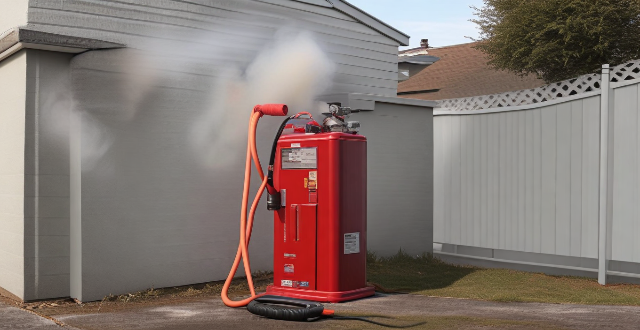
How do I choose the right type of fire extinguisher for my home or business ?
Choosing the right type of fire extinguisher for your home or business requires careful consideration of various factors such as classification, size, ease of use, maintenance, cost, and brand reputation. By taking these factors into account, you can select a fire extinguisher that meets your specific needs and helps keep you and your property safe from fire hazards.
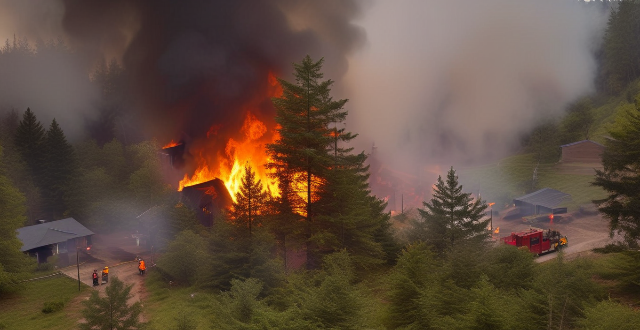
What is the proper way to use a fire extinguisher ?
Using a fire extinguisher properly can save lives and property in case of a fire emergency, and it's an essential skill for everyone. The PASS method—Pull, Aim, Squeeze, Sweep—is a simple guide to remember the steps for using a fire extinguisher effectively. Safety precautions such as assessing the situation, being aware of surroundings, calling for help, not standing directly in front of the fire, and staying low are crucial to prioritize safety while using a fire extinguisher. Remember to replace or recharge your fire extinguisher after each use, even if it wasn't fully discharged.

What are some signs that a fire extinguisher may need to be replaced ?
Fire extinguishers are crucial safety equipment that need to be in good condition. Signs that indicate a fire extinguisher needs replacement include: 1. **Pressure Indicator**: If the indicator is in the red zone or below, it needs recharging or replacement. 2. **Expiration Date**: Replace immediately if the extinguisher has passed its expiration date. 3. **Corrosion and Rust**: Corrosion or rust compromises the integrity of the extinguisher. 4. **Leaking or Discharging**: Indicates a problem with the seal or valve, requiring replacement. 5. **Damage or Wear and Tear**: Replace if there are dents, cracks, or missing parts due to damage or wear. 6. **Manufacturer's Recommendations**: Follow the manufacturer's guidelines for optimal performance and safety.

How do I dispose of an expired or damaged fire extinguisher ?
Disposing of an expired or damaged fire extinguisher is a crucial step in maintaining safety and complying with regulations. Here's a detailed guide on how to do it properly: 1. Check for Local Regulations 2. Determine the Type of Fire Extinguisher 3. Wear Protective Gear 4. Drain the Contents (If Applicable) 5. Proper Packaging 6. Transportation 7. Disposal Options 8. Record Keeping

What are the different types of fire extinguishers ?
This text provides a comprehensive guide to the various types of fire extinguishers available, each designed for specific classes of fire. It includes detailed descriptions and pros & cons of water, foam, carbon dioxide (CO2), dry chemical, wet chemical, pre-action wet chemical, and clean agent fire extinguishers, emphasizing their suitability for different types of fires such as class A, B, C, and K. The text concludes by highlighting the importance of choosing the right type of extinguisher based on potential fire hazards in one's environment.
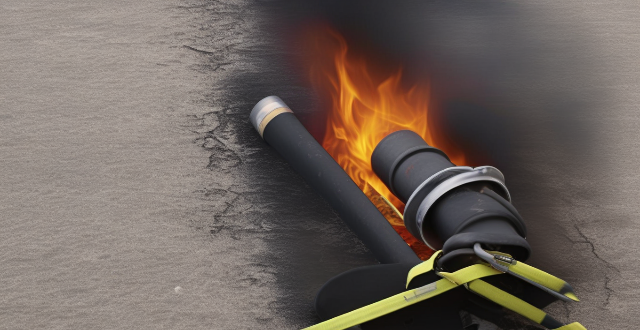
Are there any safety precautions I should take when using a fire extinguisher ?
Using a fire extinguisher safely involves understanding its type, assessing the fire, applying the PASS technique, maintaining safety, and properly recharging or disposing of it after use.

How do I disable location services on my iPhone for added privacy ?
This text provides a comprehensive guide on how to disable location services on an iPhone for enhanced privacy. It begins by explaining the importance of enhancing privacy, such as preventing targeted advertising and reducing the risk of data falling into the wrong hands. The steps to disable location services include accessing settings, navigating to privacy, locating location services, managing location services, and system services. Additionally, it offers additional privacy tips like limiting ad tracking, regularly reviewing app permissions, and using VPN for added security. Overall, this text is informative and useful for those looking to enhance their privacy on their iPhone.

What is the significance of server location in optimizing network performance ?
Server location is crucial for optimizing network performance, as it affects latency, network reliability, and data transfer times. By locating servers closer to users, organizations can reduce the distance that data has to travel, resulting in fewer hops and less time spent in transit. This leads to reduced latency, faster load times for websites and applications, and improved video conferencing or gaming experiences. Additionally, having servers located near users can help reduce network congestion and improve overall network reliability. Therefore, organizations should consider server location when designing their networks and choosing hosting providers.

How can I control which apps have access to my location data on my Apple devices ?
Managing app access to location data on Apple devices is crucial for privacy and security. Here's a guide: 1. **Access Privacy Settings**: On iOS, go to Settings > Privacy > Location Services. On macOS, click the Apple menu > System Preferences > Security & Privacy > Privacy > Location Services. 2. **Toggle Location Services**: Turn on the main switch if you want apps to use your location; turn it off to disable all tracking. 3. **App-by-App Permissions**: Set permissions for each app under Location Services. Options include Never, Ask Next Time, While Using the App, and Always. 4. **System Services**: Manage system-level services that use location data in the Location Services settings on both iOS and macOS. 5. **Frequent Permission Checks**: Regularly review and revoke unnecessary permissions, especially for apps not obviously related to location services. Additional tips include keeping software updated, reading app privacy policies, and using privacy reports in iOS to monitor app access to location data.

What should I do if I encounter an electrical fire ?
In the event of an electrical fire, it is important to stay calm and assess the situation. If possible, turn off the power source causing the fire and use a Class C fire extinguisher. Call for help if the fire cannot be controlled or is spreading rapidly. Evacuate the area quickly and safely, avoiding elevators. Never use water to try to put out an electrical fire, as it can cause electrocution. Keep a safe distance from the fire and follow up with professionals to inspect and repair any damaged electrical systems.

What are the best tennis training camps for beginners ?
This text lists the top tennis training camps for beginners. It mentions 10 different locations in the USA, Australia, Bahamas, France, and England. Each location has its own unique highlights that make it suitable for beginners. The programs offered at these camps range from private lessons to group clinics and focus on building a strong foundation in technique and strategy. The coaching staff at these camps is experienced and dedicated to helping new players improve their skills while enjoying the game.

What are the best practices for篝火 safety to prevent uncontrolled fires ?
Fire safety is crucial when enjoying a bonfire. Here are some best practices to ensure a safe and enjoyable experience: 1. Choose the Right Location: Find a clear area away from trees, bushes, and any other flammable materials. Ensure that the fire pit or ring is made of non-flammable materials. 2. Check Local Regulations: Be aware of any local laws or regulations regarding open fires. Obtain necessary permits if required. 3. Gather Supplies: Have a fire extinguisher or a bucket of sand/water nearby. Prepare shovels and other tools for tending the fire and emergency situations. 4. Stack Wood Properly: Use dry, seasoned wood to reduce smoke and flame-ups. Build a 'log cabin' or 'teepee' structure for better airflow. 5. Light the Fire Safely: Use a match or lighter; avoid using accelerants like gasoline or lighter fluid. Light the fire from the upwind side to prevent sparks from blowing onto you. 6. Keep the Fire Small: Only build a fire as big as needed for warmth and light. Don't add too much fuel at once; keep it manageable. 7. Never Leave the Fire Unattended: Always have someone present to watch the fire. Have a plan in place for emergencies or if you need to leave temporarily. 8. Monitor Wind Conditions: Be aware of changing wind patterns that could spread sparks or embers. If conditions become unsafe, be prepared to extinguish the fire promptly. 9. Properly Extinguish the Fire: Drown the fire with water, ensuring that all embers are wet and cold to the touch. Stir the ashes and add more water until everything is completely soaked. 10. Dispose of Ashes Carefully: After the fire is completely out, allow the ashes to cool before disposal. Place ashes in a metal container and dispose of them in a proper location. 11. Clean Up the Area: Remove any trash or leftover materials from the site. Leave the area cleaner than you found it.

What role does location play in selecting the right school ?
The role of location in selecting the right school is crucial as it affects various aspects such as accessibility, safety, community environment, and extracurricular opportunities. Accessibility is a primary consideration, with parents preferring schools that are easily accessible from their homes or workplaces. Safety is another important factor, with families tending to prefer schools located in areas with lower crime rates and good pedestrian safety measures. The community environment surrounding a school can significantly impact the overall experience of students and families, with local amenities and cultural diversity playing a role. Finally, the location of a school can determine the availability and variety of extracurricular activities available to students. By carefully evaluating these factors, families can choose a school that meets their academic needs and provides a supportive and enriching environment for their children's growth and development.

How does the location of a sports venue impact its design ?
The location of a sports venue significantly influences its design, dictating necessary features related to climate adaptation, topography, accessibility, environmental stewardship, community integration, and compliance with local regulations. A well-designed sports venue not only provides an excellent experience for athletes and fans but also respects and enhances its surroundings.

How often should fire extinguishers be inspected and maintained ?
Fire extinguishers are crucial safety devices that require regular inspection and maintenance to ensure their effectiveness in case of a fire emergency. Monthly visual inspections should be carried out by responsible individuals, while annual maintenance and hydrostatic testing should be performed by certified technicians. Proper record keeping is also essential to track equipment performance and ensure compliance with regulations. By following these guidelines, lives and property can be protected from fire hazards.
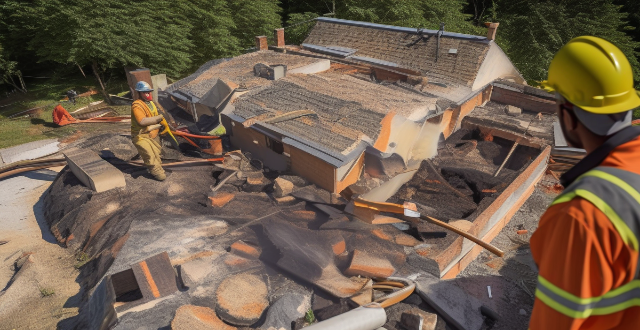
How can I prevent fires from starting in my home or business ?
The article provides comprehensive guidelines on preventing fires in homes and businesses. It suggests installing and maintaining smoke detectors, having a fire extinguisher readily available, practicing electrical safety, being careful with flammable materials, developing a fire escape plan, ensuring cooking and heating safety, and maintaining outdoor fire safety. These measures are crucial for reducing the risk of fires and ensuring the safety of loved ones and assets.
![What are the best cycling routes in [city/region] ?](/imgs/2f8b31ee-f62a-46e3-8828-37a4af062f9b.png)
What are the best cycling routes in [city/region] ?
Cycling is a great way to explore the beautiful landscapes and attractions of [city/region]. Here are some of the best cycling routes that you can take: 1. Coastal Route: Start at [location] and end at [location]. Distance: [distance]. Difficulty level: [level]. Scenic spots: [spots]. 2. Countryside Route: Start at [location] and end at [location]. Distance: [distance]. Difficulty level: [level]. Scenic spots: [spots]. 3. Mountainous Route: Start at [location] and end at [location]. Distance: [distance]. Difficulty level: [level]. Scenic spots: [spots]. 4. Urban Route: Start at [location] and end at [location]. Distance: [distance]. Difficulty level: [level]. Scenic spots: [spots]. Remember to bring essential items such as water, snacks, a map, and a first aid kit. Wear appropriate clothing and gear, and always follow traffic rules and regulations.

Where can I find a fine dining experience in Tokyo, Japan ?
Tokyo is famous for its diverse culinary scene, offering a wide range of fine dining experiences that cater to various tastes and preferences. Whether you're in the mood for traditional Japanese cuisine or international fare, there are plenty of options to choose from. Here are some of the top places to find a fine dining experience in Tokyo: ## Traditional Japanese Cuisine ### Kohju - **Location**: Ginza district - **Cuisine**: Kaiseki (traditional multi-course meal) - **Highlights**: Elegant atmosphere, seasonal ingredients, skilled chefs - **Price Range**: High-end ### Ishikawa - **Location**: Shibuya district - **Cuisine**: Sushi (raw fish served with vinegared rice) - **Highlights**: Fresh seafood, expert sushi craftsmanship, intimate setting - **Price Range**: Moderate to high-end ## International Cuisine ### Quintessence - **Location**: Shiodome district - **Cuisine**: French - **Highlights**: Innovative dishes, impeccable service, stunning views of Tokyo Bay - **Price Range**: High-end ### Narisawa - **Location**: Minami Aoyama district - **Cuisine**: Modernist Japanese with international influences - **Highlights**: Creative presentations, locally sourced ingredients, artistic plating - **Price Range**: High-end ## Vegetarian/Vegan Options ### Yohji - **Location**: Harajuku district - **Cuisine**: Vegan Japanese fusion - **Highlights**: Flavorful plant-based dishes, unique flavor combinations, cozy atmosphere - **Price Range**: Moderate ### Sougo - **Location**: Roppongi district - **Cuisine**: Vegan Italian - **Highlights**: Hearty pastas, authentic Italian flavors, friendly staff - **Price Range**: Moderate to high-end ## Budget-Friendly Options ### Ichiran Ramen - **Location**: Multiple locations throughout Tokyo - **Cuisine**: Ramen (noodle soup) - **Highlights**: Customizable broth and toppings, fast service, affordable prices - **Price Range**: Affordable ### Tenya - **Location**: Multiple locations throughout Tokyo - **Cuisine**: Tendon (tempura over rice) - **Highlights**: Crispy tempura, generous portions, quick meals on the go - **Price Range**: Affordable No matter your budget or dietary preferences, Tokyo offers a diverse array of fine dining experiences that will leave you satisfied and eager to return for more.

How do climatic conditions shape the location and design of new urban developments ?
Climatic conditions are crucial for the location and design of new urban developments, influencing water access, disaster risk, sunlight exposure, building materials, energy efficiency, and green spaces. Understanding these factors helps create sustainable cities that can withstand environmental challenges.

How does the location of electric vehicle charging stations impact their usage and accessibility ?
The location of electric vehicle (EV) charging stations is crucial for their usage and accessibility. High-traffic areas, residential areas, and workplaces are ideal locations for charging stations. Proximity to shopping centers, restaurants, and entertainment venues can increase usage as people spend more time in these areas. Residential areas need charging infrastructure within walking distance or a short drive from homes. Workplaces with charging stations can encourage employees to choose electric vehicles over traditional gasoline-powered cars. By placing charging stations in these locations, we can make it more convenient for people to charge their electric vehicles and promote greater adoption of this environmentally friendly mode of transportation.

Are there any photography workshops or tours that focus on specific travel locations ?
Photography workshops and tours that focus on specific travel locations offer a unique opportunity for photographers to capture stunning images while exploring new places. These experiences are designed to help participants improve their photography skills, learn about the local culture, and create lasting memories. In this guide, we will explore some of the best photography workshops and tours available for various travel destinations. Benefits of participating in a photography workshop or tour include skill development, cultural immersion, networking opportunities, and personal growth. Examples of popular photography workshops and tours include landscape photography in Iceland, wildlife photography in Africa, street photography in Tokyo, underwater photography in the Maldives, and architectural photography in Europe. Participating in a photography workshop or tour focused on a specific travel location offers an unparalleled opportunity to combine your passion for photography with your love of travel. Whether you're interested in landscapes, wildlife, street scenes, underwater adventures, or architectural wonders, there is a workshop or tour out there waiting for you to discover it. So grab your camera, pack your bags, and get ready for an unforgettable photography journey!
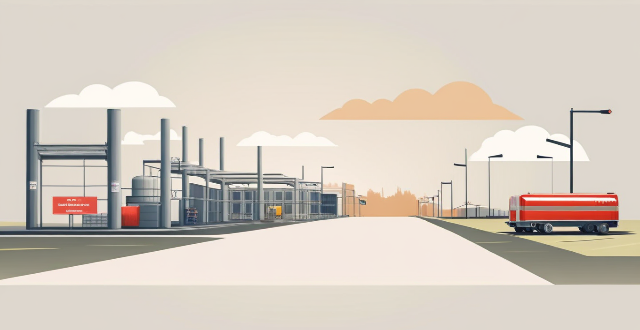
What factors should be considered when planning the location of charging stations ?
When planning the location of charging stations, several factors must be considered to ensure their effectiveness and accessibility. These factors include demand analysis, geographic considerations, infrastructure availability, economic factors, environmental impact, user experience, and technology advancements. By considering these factors, planners can ensure that charging stations are strategically located to meet the needs of electric vehicle owners while also considering economic, environmental, and societal impacts.

How can I find a tennis training camp near me ?
Finding a tennis training camp near you can be a great way to improve your skills and enjoy the sport. Here are some steps to help you find a suitable camp: 1. Determine Your Location: First, determine the location where you want to attend the camp. This could be your current city or a nearby town. 2. Use Online Search Engines: You can use online search engines like Google to search for tennis training camps in your area. Simply type in "tennis training camp [your location]" and see what results come up. 3. Check with Local Tennis Clubs: Local tennis clubs are often a good source of information about upcoming training camps. Check their websites or contact them directly to ask about any upcoming camps they may be hosting. 4. Contact Professional Tennis Coaches: Professional tennis coaches may also offer training camps or know of other camps in the area. Contact coaches in your area to see if they have any recommendations. 5. Look for Advertisements and Posters: Keep an eye out for advertisements and posters for tennis training camps in your local area. These may be posted at tennis courts, community centers, or other public places. 6. Ask Other Tennis Players: Finally, ask other tennis players in your area if they know of any upcoming training camps. They may have attended one before or heard about one through word-of-mouth. By following these steps, you should be able to find a suitable tennis training camp near you. Good luck!

What are the different types of safety signs and their meanings ?
This text describes the different types of safety signs and their meanings. Prohibition, warning, mandatory, fire safety, first aid, and information signs are all used to provide important safety information in a variety of environments. Each type of sign has a specific shape, color, and symbol or text that conveys a particular message about what actions should or should not be taken.

How does the method of loci (memory palace) work scientifically ?
The method of loci, or memory palace technique, is a mnemonic device that enhances memory recall by associating information with specific locations in a familiar place. The scientific explanation behind its effectiveness involves visualization, spatial navigation, and association processes in the brain, particularly engaging the prefrontal cortex and hippocampus. Benefits include improved memory recall, enhanced learning, increased focus, and reduced anxiety. To use this method, one should choose a familiar place, create mental images, assign locations, perform mental walkthroughs, and regularly review and refine the process.

What safety precautions should be followed in kitchens to avoid fires ?
To prevent kitchen fires, essential safety measures include keeping flammable materials away from heat sources, cleaning up spills immediately, not leaving cooking unattended, installing working smoke alarms, and having a fire extinguisher accessible. Cooking safety tips involve using appropriate cookware, watching pot lids, avoiding overfilling pots with oil, and setting timers for cooking. Electrical appliance safety requires unplugging unused appliances, inspecting cords regularly, and avoiding damaged plugs or outlets. Gas stove safety includes checking for gas leaks, keeping flammable objects away from burners, and having gas lines professionally inspected annually. Maintenance and cleanliness are also crucial, such as cleaning range hood filters, ovens, and disposing of grease properly.

How do safety signs help in preventing accidents and injuries at workplaces ?
Safety signs play a crucial role in preventing accidents and injuries at workplaces. They provide important information about potential hazards, safety procedures, and emergency exits. By following the instructions on these signs, employees can avoid dangerous situations and stay safe while working. There are four main types of safety signs: warning signs, mandatory signs, prohibition signs, and emergency signs. Warning signs alert workers to potential hazards or dangerous conditions; mandatory signs indicate actions that must be taken to ensure safety; prohibition signs prohibit certain actions that may cause harm or damage; and emergency signs guide workers to emergency exits, first aid kits, and fire extinguishers. Safety signs have numerous benefits. They increase awareness by being brightly colored and placed in prominent locations. They prevent accidents by providing clear instructions on what actions need to be taken to prevent accidents. They ensure compliance with regulations by displaying the appropriate signs required by law. Finally, they improve evacuation processes by indicating emergency exits and evacuation routes. In conclusion, safety signs are essential for creating a safe work environment. By following the guidelines on safety signs, workers can protect themselves and their colleagues from harm and prevent accidents and injuries at workplaces.